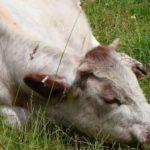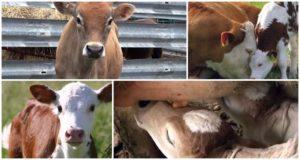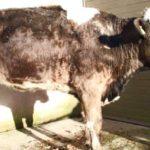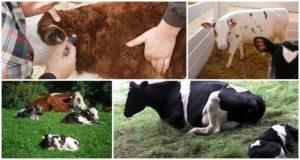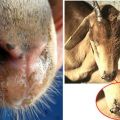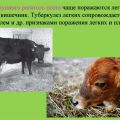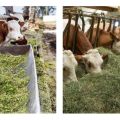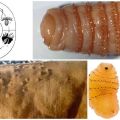Signs and parasitology of pyroplasmosis in cattle, symptoms and treatment
Piroplasmosis (babesiosis) of cattle is a transmissible, acutely occurring disease caused by unicellular microorganisms, which are carried by ixodid ticks. The disease is seasonal. Outbreaks of infection are diagnosed mainly in the spring and summer. Cows of different age groups and breeds are sick. Piroplasmosis causes significant damage to the livestock industry and farms.
What is the disease?
Piroplasmosis (Texas fever, chikhir, babesiosis) in cattle belongs to the group of blood parasitic natural focal seasonal infections. The disease is characterized by fever, damage to erythrocytes and other blood cells, a change in the formula, blood pH, digestive and nervous disorders.
Piroplasmosis in cattle is caused by the unicellular microorganisms Piroplasma bigemiria (Babesia bigemina) of the Babesiidae family. Bacteria are oval, pear-shaped, or paired-pear-shaped, in which the parasites are connected with thin ends at an acute angle.
The cycle of development of babesia occurs with the participation of the main and intermediate hosts - ixodid, argassian ticks. After penetration into the body, babesia penetrate into erythrocytes, where they actively reproduce by division or budding. Waste products of microorganisms (toxins) disrupt the structure of blood cells, causing their death, malfunctioning of all systems and internal organs.
Babesia remain active in infected cows for 15-16 days. They die quickly, lose their virulence in the external environment. Babesiosis is recorded in various climatic zones, especially in the southern, central regions of our country. Localized outbreaks of the disease are most often diagnosed during the period of activity of blood-sucking insects, in the warm season. From spring to late autumn, 2-3 outbreaks of pyroplasmosis in cattle are noted in some regions.
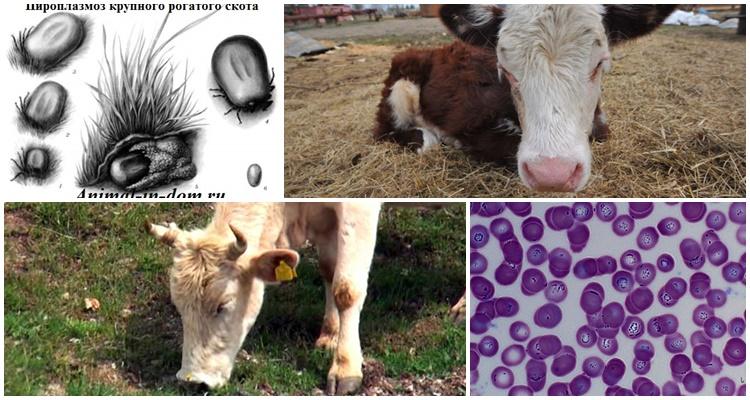
Causes of the problem
Infection of cattle occurs if the animal is bitten by a tick, the saliva of which contains parasites. Babesias with the bloodstream are carried throughout the body, penetrate into the cellular structures of the blood, tissues. The main localization of babesia is erythrocytes, leukocytes. One erythrocyte can simultaneously contain 1-3 individuals of the parasite. The source of infection is infected, sick animals, latent carriers, ticks.The rapid spread of piroplasmosis is facilitated by high humidity, rainy weather, and the lack of preventive treatments of forests and pastures from blood-sucking insects.
Weakened animals, young animals with weakened immune potential are at risk.
Disease symptoms
Pyroplasmosis in cattle occurs in an acute, subacute, less often chronic form. From the moment of infection until the first symptoms appear, it can take from several days to two to three weeks.
Important! The first clinical manifestations of babesiosis in cattle are noted by veterinarians 10-15 days after the start of the grazing period.
Signs of piroplasmosis in cattle:
- a sharp increase in temperature up to 41-42 degrees, chills, fever;
- anemicity, yellowness of the mucous membranes;
- decreased appetite, complete rejection of feed;
- weight loss;
- decrease, complete absence of milk yield;
- cramps, muscle spasms;
- lack of gum;
- intestinal disorders;
- enlarged lymph nodes;
- increased thirst;
- change in blood pH.
Sick animals respond inadequately to external stimuli. Attacks of apathy are replaced by outbursts of aggression. Nervous disorders are noted in cows. The secretory function of the gastrointestinal tract is impaired. The liver and spleen are enlarged.
Hemorrhages are noticeable on the mucous membranes of the internal organs. The blood becomes watery, does not coagulate well. The permeability of blood vessels increases, which leads to the development of hemoglobinuria, anemia, and a change in the blood count.
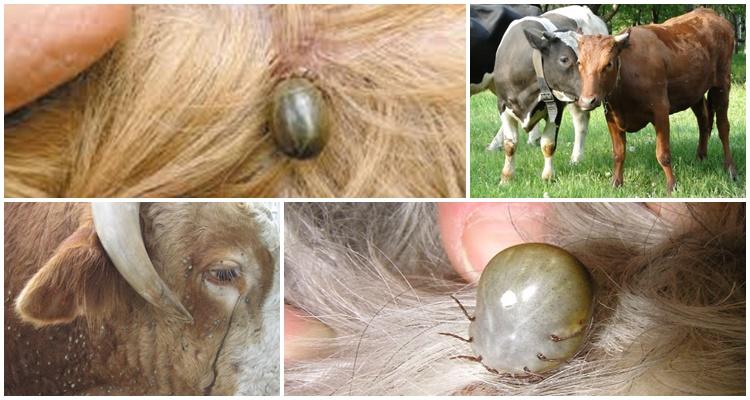
In cows with pyroplasmosis, the pulse becomes more frequent up to 110-120 beats per minute. Respiration is frequent, shallow. In the feces, mucus, particles of undigested feed are noticeable. Urine on the 3-5th day becomes dark brown. Signs of severe intoxication of the body, dehydration are noticeable.
Important! Pyroplasmidosis can simultaneously occur with listeriosis, leptospirosis, fransayellosis. Mixed infections exacerbate chronic, systemic pathologies, diseases of the cardiovascular system.
If you do not start emergency treatment of cows with pyroplasmosis, the disease in 85-90% will lead to the death of animals.
How to diagnose piroplasmosis
The diagnosis of piroplasmosis is made on the basis of clinical manifestations, laboratory tests. For analysis, take blood, feces, urine, discharge from the eyes, nose, tissue sections. The epizootological situation in the region, the data obtained from the autopsy field of animals are taken into account.
Important! To quickly identify pyroplasmosis in cattle, make a final diagnosis, take material for PCR.
Veterinary parasitology also recommends differential diagnosis. It is necessary to exclude leptospirosis, anthrax, anaplasmosis, theileriosis, and other viral, parasitic infections that have similar symptoms with cattle piroplasmosis.
Treatment methods
If you suspect that cattle have been infected with piroplasmosis or if you have diagnostic data on hand, it is necessary to start treatment of infected individuals as soon as possible, choosing the most effective methods. With piroplasmosis in cattle, complex therapy is carried out. In the treatment are used:
- specific (etiotropic) drugs;
- complex antibiotics;
- cardiac glycosides, drugs that increase blood clotting;
- antiparasitic agents of a wide spectrum of action.
The main therapy is supplemented with pathogenetic (symptomatic) medicines that improve the functioning of the gastrointestinal tract, normalize the work of internal organs, and contribute to recovery.
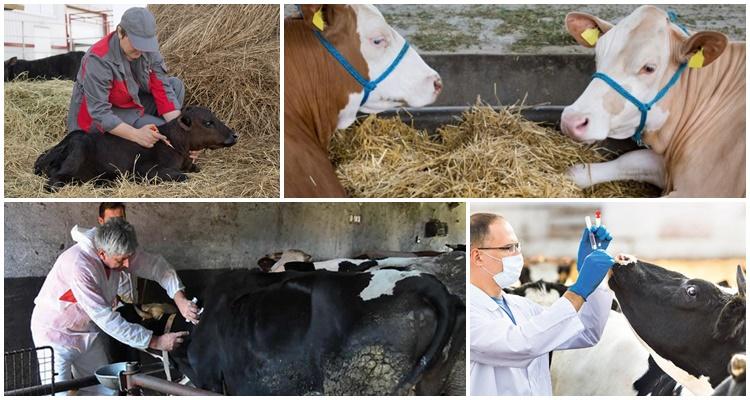
General recommendations
During the treatment, the animals are provided with comfortable living conditions. Sick individuals require rest, nutritional adjustment. The diet is supplemented with easily digestible juicy feed, B vitamins to normalize digestion.Cows are given whey, sour milk, and preparations based on copper sulfate.
Cows with pyroplasmosis cannot be driven over long distances during pasture keeping, so veterinarians carry out treatment and help animals on the spot. When diagnosing piroplasmosis in cattle, sick individuals, regardless of the method of keeping (stall, pasture), are urgently isolated in order to prevent infection of healthy individuals. Placed in insulated boxes.
Important! All livestock undergo complex analyzes, rapid tests for the detection of pyroplasmas in the blood.
Quarantine is introduced in livestock complexes and farms. A region with numerous outbreaks of the disease is declared unfavorable for this disease.
Special drugs
Good results are noted in the treatment of animals with piroplasmosis when using intravenous, subcutaneous etiotropic drugs, such as: "Azidin" ("Berenil"), "Diamidin", "Hemosporidin", "Acaprin", "Trypancin", "Trypaflavin ".
Dosage, frequency of administration of drugs, duration of therapy is assigned individually in each case, taking into account the degree of infection, stage of the disease, age, individual characteristics.
In case of atony of the proventricles, to stimulate the work of the proventricles in cows, to normalize secretory functions, veterinarians prescribe saline solutions (Glauber's salt), oily laxatives, vitamins B6, B3, B9, ichthyol, tincture of hellebore, chamomile. Hematopoiesis is stimulated by intravenous administration of vitamin B12, 10% sodium chloride.
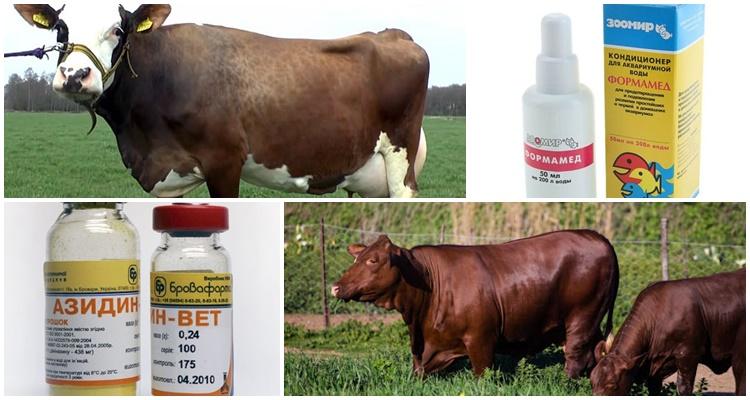
Potential danger
Even with timely treatment of piroplasmosis in cows after therapy, problems with the digestive tract, periodically manifesting nervous disorders, are noted. After the end of therapy for several weeks, recovered animals can tolerate piroplasmosis. In regions unfavorable for babesiosis, constant monitoring of the general condition of animals is carried out for a year and a half.
Immunity
In recovered animals, a nonspecific, weakly tense immunity is formed, which lasts for 6-9 months. The duration of the immune defense depends on the age, the severity of the disease. Therefore, one should not exclude the possibility of re-infection of cattle with pyroplasmosis.
Prevention
Timely application of preventive measures will help to prevent infection of cattle with piroplasmosis.
Prevention of pyroplasmosis in cattle means:
- systematic treatment of pastures with acaricidal and insecticidal agents;
- constant veterinary control over the state of the livestock during the grazing period;
- creation of cultivated pastures free from ixodid ticks;
- monthly treatments of the entire livestock with acaricides, repellents.
In regions unfavorable for pyroplasmosis, complex chemoprophylaxis is carried out using effective acaricidal agents and chemicals. For the prevention of babesiosis, once every 12-14 days, the cows are injected with an injection solution "Azidin".
